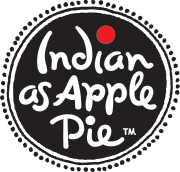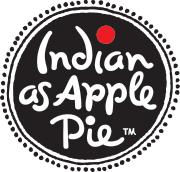January 15, 2025 1 Comment


'WHAT'S THE MOST COMMON LEGUME THAT YOU NEVER KNEW WAS A LEGUME?'
It's the first question I always ask when I really want folks to connect the dots on the concept of legumes. It's what I asked anchor Sean Lewis when we were chatting ahead of my appearance on the Saturday WGN News Morning show recently (see below!). He paused like everyone usually does. I DON'T KNOW is the most common answer. No worries, Sean, I know it feels like a trick question because it kind of is!
I pointed to the bowl pictured above that I'd brought with me. PEANUTS? REALLY? Yep! Peanuts are a legume - they are not a nut. Think about it. How do they grow? Remember getting a bag maybe at the ball park? They came in their pod-like shells that you cracked open to get to the peanut inside. Legumes are seeds that grow in a pod. Other legumes that you may not have know were legumes? Fenugreek and perhaps coffee! Though on the coffee there is still some debate out there whether to classify it as a fruit or a legume ... but more on that later. Another legume that you may not realize is? Yep, edamame! Soybeans in a pod! I still remember my days as an Agricultural Commodities reporter for Bloomberg News and going on the U.S. Ag Tour of soybean and corn farmers across the Midwest. They were shocked when I told them that the soybean pods they grew as feed for livestock were actually boiled, salted, and eaten as a snack at every bar with beer in Japan. Like we serve peanuts in the U.S.. When it comes to legumes, it's about the pods!
Legumes, also known as pulses, are the umbrella heading. There are three subheadings underneath. The seeds in pods can be round, fat, and uniquely shaped BEANS like kidney beans. They can be flat and circular LENTILS. Or, they can be plump, fat, and round like PEAS - think split green and yellow pea soup. But, they are all LEGUMES.
The reason why we want to incorporate them into our diets and why this year I'll focus even more on legumes is that they are incredibly nutritious. They are complex carbohydrates (versus simple carbs) that take time to break down into sugar in your bloodstream. That's a good thing because eating them does not spike your blood sugar.
They do have a good amount of protein as well, but the key takeaway is that they have a ton of FIBER, which is essential to digestion. If you are a meat lover and get most of your protein from meat, note that meat has no fiber. Just one cup of cooked legumes a day can give you about half your daily requirement of fiber. This is not exact and you'll want to do your own research, but a good benchmark as requirements differ for men and women. Eat them as a light soup, sprinkled on your salads, over rice as we do in Indian cuisine, or as a part of a hearty stew, like Italian minestrone. It's really that simple. Legumes fill you up and help your body to digest and operate efficiently.
It used to be that Western nutritionists would insist on keeping legumes to a minimum in a diet because they are technically carbohydrates, not connecting the dots that a complex carb is very different from a simple carb. They did not take into account the fiber and nutrients. But, finally, research is showing that legumes are extremely healthy for the gut microbiome and in some of the healthiest populations out there, they include legumes in a diet.
A question that is often asked is if the Indian diet is so healthy because of the legumes then why is the Indian population so afflicted with diabetes and heart disease? This is a complex issue that involves quite a few factors. One is that our Indian community has also shifted away from their traditional diet and has been incorporating more and more ultra-processed food, fried snacks, and simple carbohydrates into their diets. More on that later.
There are hundreds of legume varieties out there. One of the reasons it can get so confusing is that one legume can come as is, split with the skin, split without the skin, and whole without the skin. Each form looks incredibly different even though they come from the same source of legume. The different stages of the legume determine how to long to cook it and how much water it will take to cook properly. Less processing means a longer cook time and a lot more water.
The recipe I am sharing in this post is for 'Yellow Moong Lentil Soup'. And, already, I want to edit myself and show you how food bloggers if we are not careful can add to the confusion. The legume I use is a yellow one that is thin, flat, and cooks up like a porridge. Much like the orange 'lentils' you find in most Western grocery stores. BUT, the key is that this yellow 'legume' actually comes from the GREEN MOONG which is a bean. The whole green moon is split and the outer green skin is removed, leaving us with the yellow 'lentil'. But, technically it's still a bean. But, this version not only cooks up super fast, it cooks into a porridge that essentially looks and feels like a LENTIL SOUP. And so, if I called it a MOONG BEAN SOUP - that would be slightly confusing to you the reader, but it would be technically and scientifically correct. Imagine my craziness whenever testing the legume chapter of my cookbooks!
In Indian cuisine we conveniently call all legumes and their hundreds upon hundreds of variations DAL. So, zero scientific analysis required at all. Just refer to your legumes as dal and you'll be on your way.
In a roomy 3 or 4-quart pot, bring the moong dal and water to a boil. Reduce the heat and simmer partially covered for 40 minutes. Once cooked, turn the heat off, cover completely, and leave on the same burner. The dal may foam slightly when boiling. Not to worry, that will eventually go away. If it seems excessive, just skim it off the top and discard the foam. I know this seems like a lot of water, but trust me - you want this amount to get it to the consistency that we like. Trust me.
In a small pan, heat the oil or ghee over medium-high heat. Once warm, add the turmeric and cumin seeds. Cook until the seeds are reddish brown, about 40 seconds. Stir. This process is called tarka.
Add the onion and stir. Cook until slightly brown, about 3 minutes.
Add the ginger and garlic. Stir and cook for about 1 minute. Add the garam masala. Stir and cook for 1 minute. Turn the heat off.
Transfer this tarka (spice mixture) to the pot of dal (cooked lentils). To get all of the delicious flavor out and deglaze the small pan, pour a large spoon of dal into the pan, stir and scrape all of the deliciousness out and add to the pot of dal.
Add the salt and stir. Bring the dal to a boil and simmer for another 2minutes until everything pulls together, about 2-3 minutes. Serve with rice or Indian bread like roti or naan. You can also eat this as a soup. Once a dal cools or is refrigerated, it's natural for it to thicken up. Just add a little water before heating to loosen it up and adjust the salt accordingly. The consistency should be very thin and soupy.
Comments will be approved before showing up.


Katie Ross
January 21, 2025
I made this last night – so easy and delicious!!
———
Indian As Apple Pie replied:
Wonderful!!! So glad. So good, right?!!!! ________________________________